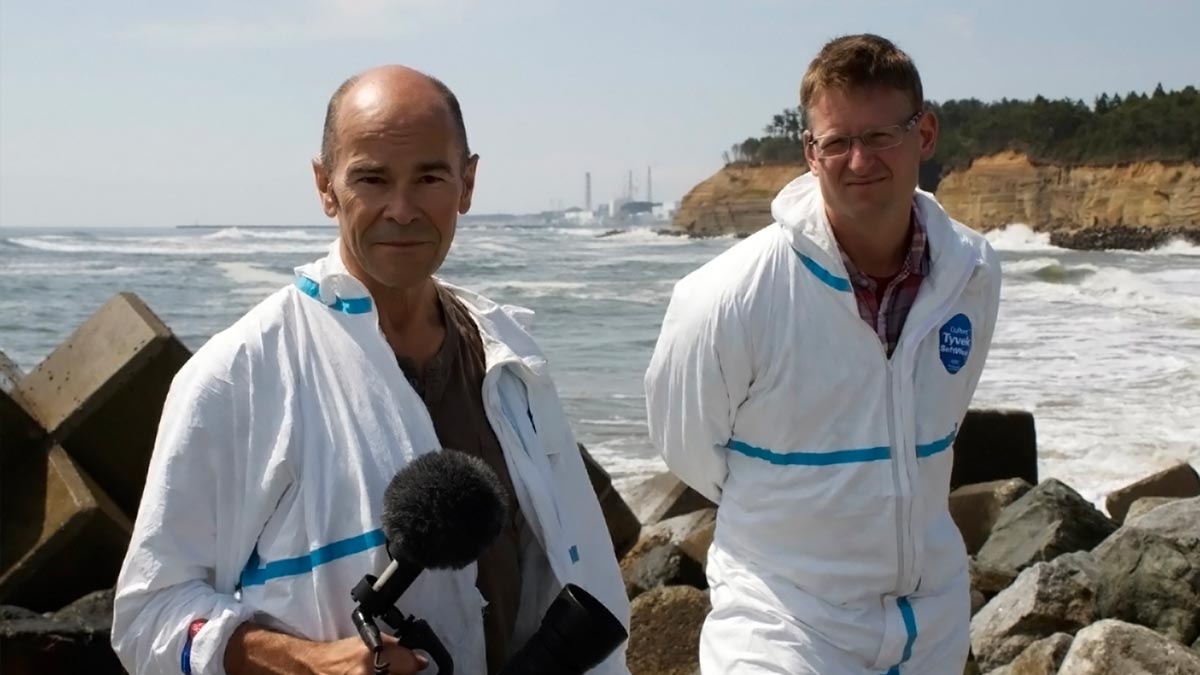Is it possible to be an environmentalist and to support nuclear power at the same time?
In the 2013 documentary “Pandora’s Promise,” former Merry Prankster, hippie entrepreneur and Whole Earth Catalog editor Stewart Brand answers his own question with another question: “In light of climate change, can you be an environmentalist and not be pro-nuclear?”
The film, which will be screening for free at Star Hall on Thursday, Sept. 24, at 7 p.m., asks the same question over and over again, and filmmaker Robert Stone keeps coming up with the same unequivocal answer: Nuclear power is the only energy source that can keep modern civilization going, he says, without destroying environmental conditions that made modern civilization possible.
Stone frames his movie around five individuals who underwent what he calls a “dramatic intellectual metamorphosis” on the perennially controversial issue of nuclear power.
“The evolution of their apostasy on this issue – their journey from being staunchly anti-nuclear to passionately pro-nuclear – forms the central dramatic arc of the film,” he said in a director’s statement about the documentary.
Four of the five people he profiles are affiliated with The Breakthrough Institute. The Oakland, California-based organization says it rejects “outmoded orthodoxies” on the political left and right, and is dedicated to new ways of thinking about energy and the environment.
Like them, the Academy Award-nominated director of the anti-nuclear weapons documentary “Radio Bikini” has come to believe that renewable energy sources cannot power the planet. He also questions “traditional” environmentalists’ beliefs that humans can dramatically reduce their energy footprints through energy-efficiency measures.
“The almost theological adherence to a set of unquestionable beliefs by most liberals and environmentalists has likely contributed as much or more to prolonging our addiction to fossil fuels as the equally appalling state of denial among many conservatives when it comes to climate change,” Stone wrote.
Instead, he believes that the speedy development of nuclear power plants is the “greatest hope” we have in order to save the world from an environmental catastrophe brought on by emissions from conventional energy sources.
While he maintains that the solar power industry’s manufacturing process is “incredibly toxic,” and ignores geothermal energy altogether, Stone claims that nuclear power can provide the world with “clean, carbon-free” electricity.
Grand County Public Library Assistant Jessie Magleby said that movie critics have called “Pandora’s Promise” a provocative, compelling and controversial film.
“The topics covered will likely add to the debate about nuclear power – a poignant issue of our time,” she said.
“Pandora’s Promise” is the third nuclear power-focused film that the Grand County Public Library has shown in partnership with the Utah Film Center. In 2011, they screened “Into Eternity,” and in 2013, a large audience turned out to watch “Uranium Drive-In.”
Utah Film Center Artistic Director Patrick Hubley said the latest film digs into some of the “accepted truths” about nuclear power.
“Though it presents an interesting perspective on the benefits of nuclear power, it doesn’t shy away from the potential dangers and is sure to inspire discussion and debate,” he said.
However, many critics say the film does shy away from discussing those dangers, calling it a one-sided propaganda piece that ignores or glosses over nuclear power’s troubled history.
The group Beyond Nuclear says that the industry would need to build 1,000 to 1,500 nuclear power plants in the next 35 years in order to offset a significant amount of greenhouse gas emissions from conventional energy sources. But the costs to do so would be exorbitant, it says, posing a “financial quagmire” for investors.
Beyond Nuclear also takes issue with the film’s contention that nuclear power is safe, clean and reliable. It notes that infamous nuclear accidents around the world have poisoned the environment, released cancer-causing elements and produced waste that will remain radioactive for thousands of years.
New York Times science writer Andrew Revkin, who moderated a lively 2013 discussion between Stone and environmentalist Robert F. Kennedy Jr., has said the film is vital viewing, and offers a refreshing new direction in the “tired old battle” over the shape of the country’s energy future. However, Revkin wrote that the film suffers because it does not incorporate any input from “reasoned critics” of nuclear power, and said the film’s main flaw is that it takes a “finger-wagging and dismissive approach” toward those people.
Pro-nuclear power movie comes to Star Hall on Sept. 24
“The topics covered will likely add to the debate about nuclear power – a poignant issue of our time.”
When: Thursday, Sept. 24, at 7 p.m.
Where: Star Hall, 159 E. Center St.
Cost: Free
Star Hall is located at 159 E. Center St. For more information about upcoming Utah Film Center screenings, go to: www.utahfilmcenter.org/events/category/moab/upcoming/.




